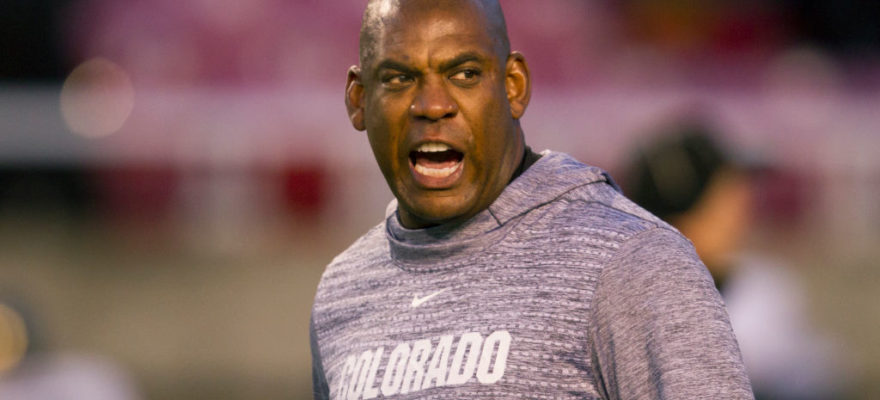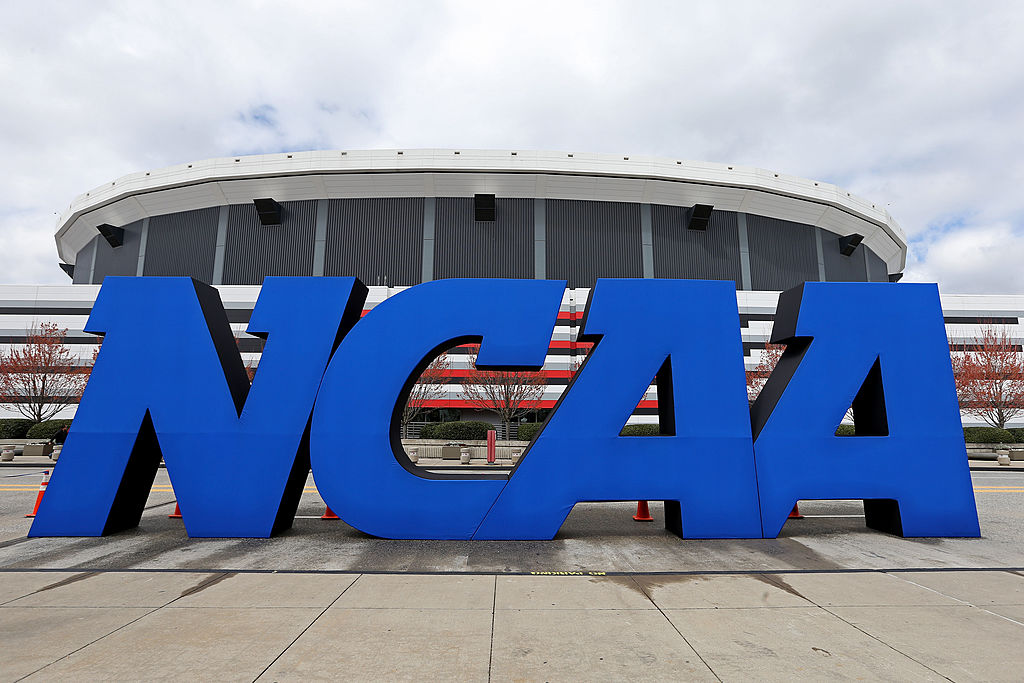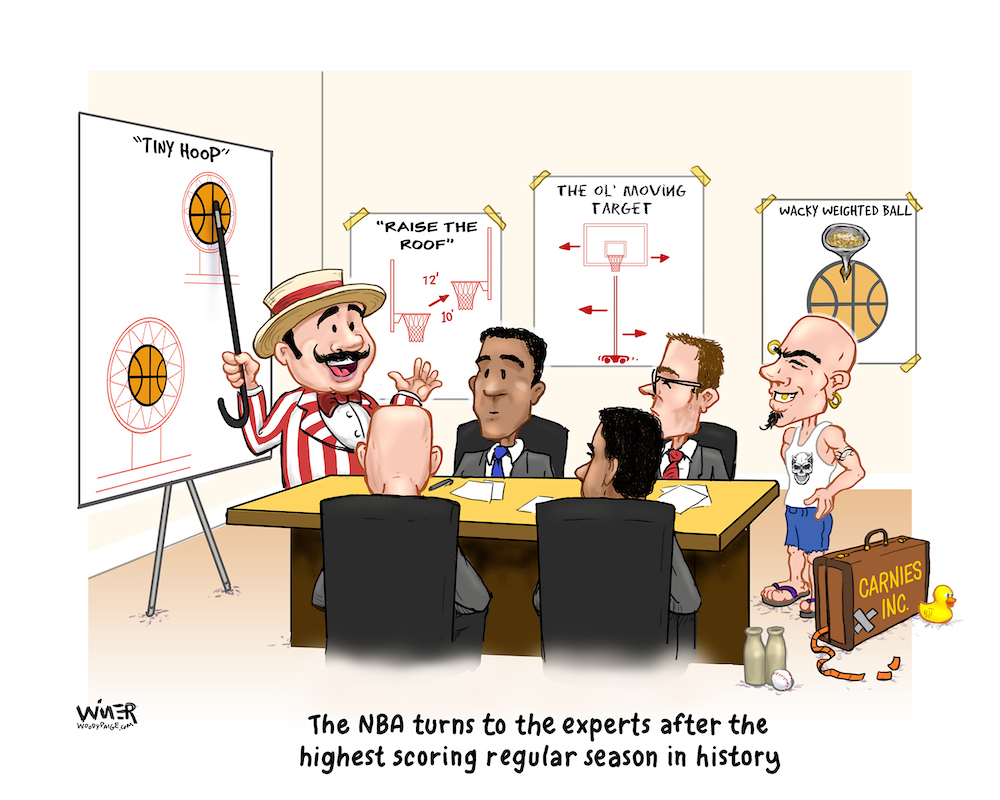The single most startling development in college football – and there have been many of them – is the skyrocketing of coaching salaries and the buyouts. And the most eye-popping, head-shaking instance came up last week, when desperate Michigan State lured Mel Tucker away from Colorado after one 5-7 season in Boulder.
The Spartans will double his salary, from the $2.7 million he was due to make at Colorado this year, to $5.5 million, or $33 million over six years. And much of it effectively is guaranteed.
Using the unproven Tucker as a working example of the impact of the Pac-12 having fewer resources and lower conference revenue per school than especially other Power 5 leagues is ridiculous. Yet that’s what I’m hearing. It’s as if the Pac-12 should be kicked out of the Power 5 and relegated to an expanded Group of 6 … or, heck, dropped to the FCS, competing for national titles against Montana and North Dakota State.
The quirky, but proven Mike Leach moving from Washington State to the SEC’s Mississippi State, and going from $3.75 million to $5 million, is a better example. But this is his third Power 5 league head coaching job – in three leagues — and he also both gets restless and wears thin. He got a raise, but not a stunning one. Hawaii’s Nick Rolovich was hired to replace him, going from Honolulu to Pullman, and he will make about $2.9 million this year.
Seeking a “recharge,” Chris Petersen surprisingly resigned at Washington. Jimmy Lake was promoted to replace him and will earn $3 million. Although Petersen’s name was thrown against the wall for other jobs, including at CU, there are no indications his “recharge” won’t last at least a season away from coaching. And even if he gets back in, he won’t have been “lured” from a Pac-12 program.
You don’t play football with a duel of ATM cards.
More pertinent is the on-the-field evidence. In the six seasons of the College Football Playoffs, Pac-12 teams have been included among the four teams only twice — Oregon, the eventual runnerup, in the 2014 season; and Washington, a semifinal loser, in the 2016 season. This season, Pac-12 champ Oregon stumbled with an opening loss to Auburn and an inexplicable defeat at Arizona State. The four-team selection, leaving out the Pac-12, was fair, but it would have been challenging for the selection committee if the Ducks had played Directional State A&M in the first week instead. Oregon at least belonged on the same field with the four semifinalists, so this isn’t a case of the “awful” Pac-12.
Disclosure No. 1: I’m a CU alum. So this is more a vote than an editorial position.
CU needed to wave farewell to Tucker and move on. Sweetening his contract to convince him to stay would have been disgusting under the circumstances. The university regents might not have gone for it. In fact, they shouldn’t have. An extension after next season, if warranted? OK, talk then. But this stunk.
Tucker left a week after the second National Letter of Intent date, and those who signed with CU were betrayed. The biggest issues are not that he took an offer doubling his salary, but how he went about it and even that at the start he didn’t say, no, can’t do this. Not now. Not in this timeframe. And stick to it.
The plane MSU AD Bill Beekman used in the search was at an ancillary Denver airport, near DIA, from 9:15 a.m. to 2 p.m. on Friday, February 7, before going on to San Jose, presumably to speak with a not-interested 49ers defensive coordinator Robert Saleh.
Tucker issued his “committed to CU” tweet that Saturday. He met with CU boosters on Friday, Saturday and Sunday nights in California, appeared on two Denver radio stations Tuesday and again met with boosters that Tuesday evening at the Denver Country Club – shortly before word broke that he had accepted the MSU job.
This is part of the financial picture, too: CU and Mike MacIntyre, fired late in the 2018 season, negotiated down his buyout to $7.2 million, and the second half was due January 20. Tucker (and/or MSU) owes CU $3 million for a buyout on his end.
Now, consider this history as evidence of the madness.
In late 1994, MSU hired Nick Saban in the wake of the decision to fire George Perles.
Saban, then 43, was the fallback after Penn State offensive coordinator Fran Ganter said no. At the time, Saban was Bill Belichick’s defensive coordinator with the Cleveland Browns.
Saban also had been a Perles assistant who had spent two stints as an NFL assistant sandwiched around a one-season stay as head coach at Toledo. He signed a five-year contract with MSU, with a starting base salary of $130,000. Yes. $130K.
(I spent a year checking in with him off and on for a Sporting News epic about a major program coaching transition, and that’s retooled here.)
Even adjusted for inflation, Saban’s starting salary at MSU is “only” $220,000 in 2020 dollars.
Saban is scheduled to earn $9.1 million in 2020 at Alabama.
He’s considered worth it.
Tucker, who coached under Saban in 2015 with the Crimson Tide, doesn’t have the track record as a head coach to be in that stratosphere.
Plus, he will have to cope with MSU also dealing with campus image issues and possible NCAA sanctions.
But $5.5 million a year and what amounts to close to a substantially guaranteed contract provides a lot of cushion. He has gone from the ninth highest-paid coach in the Pac-12 to the fourth-highest in the Big Ten.
Disclosure No. 2: I’m a Pac-12 homer. I was raised in Eugene, where my father – who had played at Wisconsin — coached at Oregon for 17 years.
I believe the Buffs’ move from the Big Eight to the Pac-12 produced a far better fit of school and league.
Conceded, the Pac-12’s biggest problem is the widening disparity in television income. The Pac-12 networks have been disasters. Commissioner Larry Scott, paid as both commissioner and CEO of the networks, has delivered suspect leadership. Or worse.
But if this is about whether Pac-12 coaches can be paid ridiculous amounts of money, that’s not the predominant standard for me.
In the arms race, Pac-12 facilities have been upgraded, too. And Oregon, with Knight family and Nike money in evidence all across campus, not just in sports, is the showcase.
The other irony here is that the influential College Football Association was formed in 1977 to essentially attempt to give the college game’s upper level programs more control of their fate in dealing with the NCAA. Two leagues didn’t join – the Pac-12 and Big Ten. The CFA ultimately was based in Boulder under executive director Chuck Neinas, who had been an NCAA executive and then Big Eight commissioner.
“I would say the Pac-12 is firmly entrenched in the Power 5,” Neinas said Monday.
His perspective: A CFA-pushed lawsuit against the NCAA led to conferences being able to negotiate their own TV deals, opening up the marketplace. That revolutionized the game, heightening both the revenue and the stakes. Its impact is on display every Saturday – and more. After the lawsuit did that, the CFA essentially put itself out of business and it folded in 1997. Neinas became a coaching search and athletic department consultant, so he had a hand in the hiring of many prominent coaches before returning to the Big 12 as acting commissioner in 2011-12.
“Before Bob Devaney went from Wyoming to Nebraska, the banks in Lincoln would buy blocks of tickets to help support the program and put them out on the desk on Saturday morning and people could come by and pick up tickets and go down to Memorial Stadium and watch the Huskers play for free,” Neinas said.
“Since Bob Devaney went to Nebraska, how many games have been sold out? The stadium has been expanded two or three times. Bob didn’t make a lot of money, but the point is, there are some people who are certainly worth what they’re paid.”
Neinas is skeptical of overreaction to “hot” prospects.
“One season does not a resume make,” Neinas said. “It gets me that Terry Frei goes 9-3 his first year, so it’s, ‘Let’s give him an extension.’ They jump too quickly. And you have to understand that most coaches have a shelf life. So don’t put yourself in a position where you wind up paying for years that you normally wouldn’t have to pay for.”
I’m going to be accused of being an unrealistic hayseed alum here. Some of my better friends disagree with me on this. They didn’t go to CU. They go to Denver sports bars for their college football, not Boulder.
I’m tired of the CU program’s defensiveness about “resources,” and of outsiders trashing the CU job as one of the “worst” in the Power 5.
MacIntyre had facility upgrade promises in his contract, and CU — in part because it backed off the requirement to raise the money before breaking ground — delivered.
I took a tour through the latest version of the showcase Oregon facilities in the Hatfield-Dowlin complex in the spring of 2014, shortly after it opened. My father’s former Oregon players reminded me that their weight room was the Central Lane County YMCA. CU is in that arms race. The Champions Center has less marble and leather … and that’s about it.
And the notion that Boulder and the campus are anti-football is at least overstated. There are anti-football faculty on every campus in America — including at Alabama.
Bring recruits to the US 36 overlook, the high point at the approach to Boulder.
It works.
CU can be a Pac-12 power. CU can be a national power.
It can be done.
If it could have been done with Mel Tucker as head coach, we’ll never know.
About Terry: Terry Frei is the author of seven books. His novels are Olympic Affair and The Witch’s Season, and among his five non-fiction works are Horns, Hogs, and Nixon Coming; Third Down and a War to Go; and ’77: Denver, the Broncos, and a Coming of Age. Information is available on his web site, terryfrei.com. His woodypaige.com archive can be found here.
More from The Woody Paige Sports Network:
- Woody Paige: Manning family’s influence on NFL may live on forever
- Ranking the potential outcomes of Tom Brady’s impending free agency
- Jeremy Roenick shares legendary Michael Jordan gambling story
- Here’s who Vegas is picking to win the 2020 Masters
- ‘Midnight’ Mel Tucker leaves CU for Michigan State and a pile of cash

















